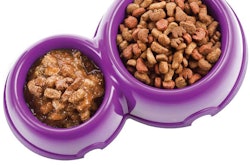
Superpremium pet foods increasingly incorporate novel ingredients that have a nutritious reputation in human foods. Some of these purported superfoods originated in Mexico, where superpremium pet food is growing in popularity and taking market share from traditional premium foods.
Register to learn about superpremium pet foods in the Mexican market at Pet Food Technology: Innovation in Superpremium Diets (Tecnología de Alimentos para Mascotas [TAM]: Innovación en Dietas Superpremium) on December 5, 2017 in Ensenada, Baja California, Mexico.
Indigenous peoples of Mexico originally cultivated avocados, chia and amaranth long before the Spanish invasion. These three novel pet food ingredients don’t appear in many dog and cat foods yet, which may mean they may help superpremium pet foods stand out from the competition.
1. Avocado
At least one variety of avocado (Persea Americana) likely originated in south-central Mexico, although certain cultivars may have been domesticated elsewhere. Anthropologists have documented how civilizations from Mexico to Peru grew avocados and incorporated the fruit into their culture and mythology.
Although avocados contain a chemical called persin, a natural fungicide, the fruit is not poisonous to dogs and cats, wrote W. Jean Dodds, DVM in a blog. To the contrary, research published in the Journal of Animal Science, found that avocado meal could be a safe novel dietary fiber source for cats.
Avocado appears in more dog and cat foods than the other two novel ingredients, according to data from more than 7,000 pet food ingredient panels compiled in the Dog and Cat Food Ingredient Center. Some form of avocado, such as oil powder or dried, made up part of the recipes of 42 dry dog foods, or approximately two percent of the total. Twenty-three canned dog foods used some form of avocado. For canned cat foods, 18 products used avocado.
2. Chia
Indigenous southern Mexicans and Guatemalans domesticated chia (Salvia hispanica) as a staple crop. While still popular among Mayans and others in Mexico and Guatemala, chia seed now appears worldwide and are touted as a superfood.
Those superfood claims may be justified, ancient grain chia seeds contains 19 to 26 percent protein, according to Greg Aldrich, PhD, Kansas State University professor of grain science and Petfood Industry columnist. The seeds are gluten-free, but do contain healthy omega-3 fatty acids and insoluble fiber.
Although healthy, chia seeds only appear in a total of 21 dry or canned dog foods, approximately one percent of all the recipes in the Dog and Cat Food Ingredient Center database. A slightly larger percentage of cat food recipes use chia, at 1.8 percent. Fourteen dry cat foods listed chia in the ingredient deck, while 4 canned cat foods did so.
3. Amaranth
Aztecs called the variety of amaranth they ate “huautil.” Anthropologists believe hardy, nutritious, amaranth crops once grew in abundance throughout North and South America, long before the continents were called the Americas. However, the ancient grain declined in popularity following European conquests.
Amaranth may stage a comeback though. During Petfood R&D Showcase 2017, pet food ingredient supplier, ADM, demonstrated the properties of amaranth as an ingredient at their workshop station. Gluten-free amaranth contains more protein than wheat and corn, wrote Greg Aldrich, PhD, in his Petfood Industry column. The fat content also beats most grains with nearly half of the healthy fatty acids from linoleic and oleic acid.
Of the three novel pet food ingredients from Mexico, amaranth appears in the smallest number of pet foods. Only eight dog foods, seven dry and one wet, use amaranth.
Superpremium pet food workshop in Mexico
Avocado, chia and amaranth make up only a few of the novel ingredients used in the growing Mexican pet food market. To help Mexican and other Latin American pet food companies catch this trend, Arturo Valdez, GfK Mexico’s consumer and retail director, will deliver the opening session of the interactive workshop, Pet Food Technology: Innovation in Superpremium Diets (Tecnología de Alimentos para Mascotas [TAM]: Innovación en Dietas Superpremium) on December 5, 2017 in Ensenada, Baja California, Mexico.
During the opening session of TAM, Valdex will explore pet food segment growth and relevance among main retail specialized market channels. He will delve into Mexican pet owners’ new mindset as pet parents, not just pet owners, in terms of values, needs, lifestyle and trends.
Pet Food Technology: Innovation in Superpremium Diets workshop
Following Valdez’ presentation, TAM participants will visit eleven interactive stations over two days of intensive learning and networking. At each station, participants can learn, hands-on, from industry suppliers about how to use various ingredients, equipment, processing techniques or other information to make the premium and superpremium pet food and treats that Mexican pet food consumers demand.
Exclusive data on the Dog and Cat Food Ingredient Center
The Dog and Cat Food Ingredient Center contains exclusive data on which pet food companies are using particular pet food ingredients, along with the nutritional information about these products. Beyond that, the Dog and Cat Food Ingredient Center database allows users to analyze how pet food companies refer to ingredients, for example chicken byproducts versus coproducts.














